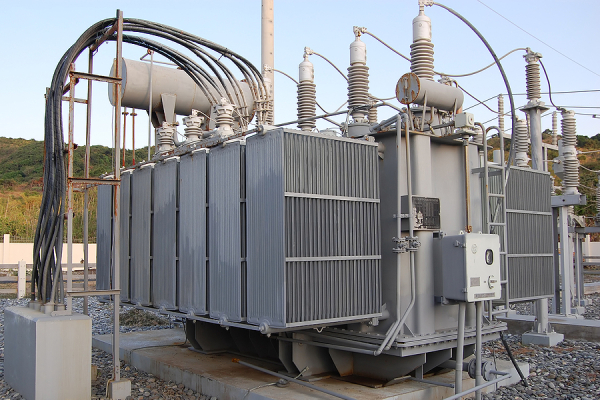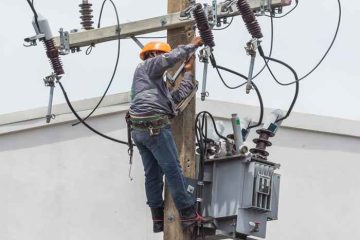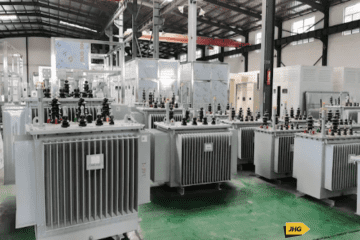Transformers play a pivotal role in the power system, serving as one of the most reliable components of the electrical grid. However, they are not immune to failure. Various factors, both internal and external, can lead to transformer failure, potentially resulting in catastrophic consequences. At Just HardRich Global Resources Limited, we pride ourselves on being the choicest Electrical Power and Control Engineering Company, providing expert solutions to prevent and address transformer failures. In this comprehensive guide, we delve into the causes, analysis, and prevention of distribution transformer failures to help you maintain a safe and efficient electrical system.
Common Causes of Transformer Failure
Transformers are complex devices, and several factors can contribute to their failure. Understanding these causes is crucial for preventing breakdowns and ensuring longevity. Here are some of the most common causes of transformer failure:
Mechanical Failure
Mechanical failures can result from shipping damage, seismic activity, or thru-faults. Such failures often manifest as displacement or damage to the winding turns due to the forces exerted during the damaging event. These failures can include scalloped conductors (beam failure), looped conductors over adjacent turns (hoop failure), or severed conductors due to hoop force tension. To detect these issues, a Sweep Frequency Response Analysis (SFRA) test is recommended. The SFRA test compares the results with factory data to identify any mechanical changes.
Dielectric Failure
Dielectric failure occurs when the insulation system degrades, often due to thermal or electrical stress. This degradation can result in turn-to-turn failures or arcing between windings. Over time, thermal aging of insulation leads to brittleness, making the transformer susceptible to internal faults. Regular maintenance and monitoring of insulation health are essential to prevent dielectric failures.
Lightning Surges
Lightning surges can induce high voltage spikes in the power lines, leading to insulation breakdown and transformer failure. Surge protection devices and proper grounding techniques are critical to mitigating the effects of lightning surges.
Poor Workmanship and Manufacturing Defects
Quality craftsmanship and manufacturing processes are vital for transformer reliability. Defects in design, materials, or assembly can lead to premature failures. Ensuring rigorous quality control during manufacturing and thorough testing before deployment can help minimize these risks.
Overloading
Operating a transformer beyond its rated capacity can cause excessive heating and insulation degradation. This thermal stress accelerates the aging process and increases the likelihood of failure. Proper load management and adherence to operational limits are crucial to avoid overloading.
Inadequate Maintenance
Lack of regular maintenance can lead to unnoticed issues, such as oil leaks, moisture ingress, or loose connections. These problems can escalate into severe failures if not addressed promptly. Implementing a robust maintenance program, including routine inspections and testing, is essential for transformer longevity.
Line Surges and External Short Circuits
External short circuits and line surges can induce high current flows, resulting in mechanical and thermal stress on the transformer. Proper coordination of protection devices and regular system analysis can help mitigate these risks.
Deterioration of Insulation
Insulation degradation over time is inevitable, but it can be managed through regular testing and monitoring. Dissolved gas analysis (DGA) and insulation resistance tests are effective tools for assessing insulation health and identifying potential issues before they lead to failure.
Moisture Ingress
Moisture is a significant enemy of transformers, as it reduces the dielectric strength of insulation and promotes corrosion. Ensuring proper sealing and regular oil filtration can prevent moisture ingress and protect transformer components.
Sabotage and Malicious Mischief
While less common, sabotage and malicious mischief can cause severe damage to transformers. Implementing security measures and monitoring systems can help detect and prevent such incidents.
The Bathtub Curve
The Bathtub Curve describes the relative failure rate of similar products, such as transformers, over their lifecycle. It consists of three phases:
- Infant Mortality: Failures are least expected and often due to design, manufacturing, or material defects. Manufacturers must conduct deep analysis to identify and rectify these issues.
- Normal Life: Also known as the useful life, this phase has the lowest constant failure rate. Random failures may occur, but they are typically infrequent.
- End of Life Wear-Out: Wear and tear increase failure rates as the product nears the end of its life. Regular maintenance and timely replacement are essential during this phase.
Types of Transformer Failures
Transformer failures can manifest in various ways, depending on the construction type. Here are some common failure modes:
Mechanical Failures
Mechanical failures, such as shipping damage, seismic activity, and thru-faults, can cause displacement or damage to winding turns. Regular SFRA testing and monitoring of low voltage excitation current, impedance, and partial discharge can help detect mechanical issues early.
Electrical Failures
Electrical failures result from insulation degradation due to thermal or electrical stress. These failures can lead to turn-to-turn arcing or dielectric breakdown. Regular insulation testing, DGA, and thermal monitoring are essential for identifying and preventing electrical failures.
Distribution Transformer Failure Analysis
Common causes of distribution transformer failure include grounded cores, core clamping shorts, and poor maintenance. Regular oil filtration, leak repairs, and preventive maintenance can help avoid these issues. Here are additional factors to consider:
Craftsmanship
Quality craftsmanship is crucial for transformer reliability. Rigorous manufacturing processes and controls are necessary to ensure high-quality products.
Material
Using the right materials, such as magnetic silicon steel with appropriate thickness, is essential for transformer longevity. Original, non-recycled materials are recommended for optimal performance.
Design
Proper transformer design, such as round-wound configurations, reduces voltage stress, stays cooler, and minimizes the risk of short circuits. Design considerations play a significant role in transformer reliability.
Other Miscellaneous Failures
- Loose Connections: Long-term vibration can loosen connections, leading to overheating and buzzing.
- Excessive Harmonics: Higher temperatures at neutral termination indicate harmonics, often from electronic loads.
- Unbalanced Loads: Unbalanced loads cause higher temperatures on one phase, leading to local heating.
- Cooling Issues: Cooling fan failures or oil leaks increase internal temperatures, necessitating regular inspections.
Solution: Preventative Maintenance of Transformers
Implementing a comprehensive maintenance program is key to preventing transformer failures. Regular electrical testing, oil filtration, and trend analysis help identify issues early and ensure efficient operation. Here are some essential tests:
- Three-Phase Turns Ratio
- Insulation Resistance
- Winding Resistance
- Short Circuit Impedance
Why Preventive Maintenance for Transformers?
Preventive maintenance offers several benefits:
- Early detection of issues prevents hazards.
- Improved efficiency by addressing conditions related to transformer losses.
- Cost savings through scheduled repairs and maintenance.
In addition to electrical tests, regular oil sampling and dielectric strength testing are crucial. Oil filtration and breakdown voltage (BDV) tests help maintain insulation health and prevent failures.
At Just HardRich Global Resources Limited, we specialize in comprehensive electrical power and control engineering services, including transformer maintenance and failure prevention. Our commitment to excellence, safety, and innovation ensures that your electrical systems operate reliably and efficiently.
By implementing these safety tips and maintenance practices, you can extend the life of your transformers and ensure the safety and efficiency of your electrical systems. Trust Just HardRich Global Resources Limited for all your electrical power and control engineering needs. Contact us today to learn more about our services and how we can help you achieve optimal performance and reliability.



